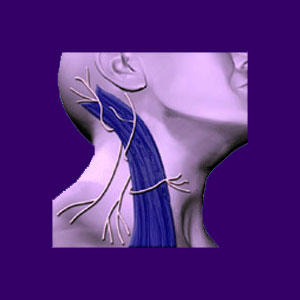
Bell’s palsy is a disturbing neurological condition that is usually characterized as a idiopathic medical puzzle. Although there are many specific and general suspected reasons for facial palsy to occur, the Bell’s variety is pronounced when no particular source of nerve paralysis can be readily identified in the affected individual. Many doctors have long linked this palsy to conscious emotional stress, but experts in mindbody treatment have taken this research further and found connections to underlying repressed subconscious issues in some patients.
This commentary details the frightening, but fascinating occurrence of a specific type of facial palsy and its psychological origins.
What is Bell’s Palsy?
Bell’s is a palsy which affects a particular nerve called cranial VII, causing the patient to lose control or functionality in many of the facial structures. The condition typically only affects the nerve on one side of the face, making it a unilateral problem. This nerve facilitates the movement and control of many of the facial muscles, including the abilities to blink and close the eyes, move the mouth, produce tears and even control the functions of the tongue.
The cranial VII nerve is most often thought to be somehow affected by some form of inflammation or compression, as it passes through the narrow canal under the ear. Some patients experience a complete paralysis of cranial VII, while other patients must endure a variable reduction in normal functionality, although some usefulness is spared.
Bell’s Palsy Symptoms
Typical signs of Bell’s might also be present in other forms of identifiable facial paralysis concerns. Bell’s is diagnosed by exclusion, rather than by any concrete criteria, which is so common among psychosomatic pain syndromes. The usual symptoms experienced are:
Inability or reduced ability to move one side of the mouth. This can affect speech and expression, as well as produce an uncontrollable drip of saliva from the corner of the mouth and unilateral sagging.
Inability or reduced ability to open and close the affected eye. Eyebrow function may or may not be affected. Eye problems, such as dryness and corneal concerns, are the major hazards of the Bell’s experience. Some patients suffer permanent eye trauma due to chronic dryness.
The inability or reduced ability to move the tongue and taste certain flavors might exist. This often affects speech to one degree or another.
Headaches and/or dizziness might occur in some patients, as can general facial numbness and tingling.
Rarely, the arm on the affected side might also suffer some reduced functionality, clearly showing a more widespread nerve condition than simply thought to exist at cranial VII.
Bell’s Palsy Considerations
While many mechanical and disease processes can create facial palsy, these are easy to recognize and diagnose through appropriate tests and screenings. Certain viruses and diseases can create palsy conditions, as can some specific neurological disorders.
It seems that ischemia of the cranial VII nerve might be the most logical cause of Bell’s type palsy, since the condition is otherwise idiopathic and does not seem to exist from any verifiable structural source. Oxygen deprivation of cranial VII would certainly be able to produce the typical symptomology and could end at any time, explaining the usual quick and treatment-free recovery.
Luckily, most cases of Bell’s do resolve on their own, even though some medications have been linked to faster and possibly better resolution. As of now, there are no completely proven treatment strategies, so patients are often exposed to trial and error tactics by their physicians.
Some people have utilized the principles of knowledge therapy to fight Bell’s very effectively. I have little experience with this particular facet of the treatment, but would love to hear from more of you who have tried it.
The most important thing to remember with Bell’s, or any other potentially psychosomatic condition, is to relax and not get stressed out over the symptoms. Obsessing over the problem will only give it more power over you and perpetuate the time it takes to resolve.
Back Pain > Psychologically Induced Pain Syndromes > Bell’s Palsy




